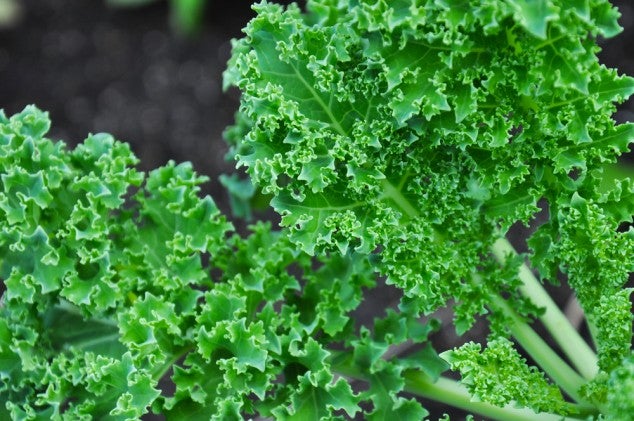Why (And How) To Give Kale A Try

Photo: <a href=http://shutterstock.com>Shutterstock.com</a>
This hearty green vegetable can be cooked in a variety of ways.
Leafy greens are great, but kale is killer. Packed with nutrients, it’s one of those superfoods you owe to your body (and your next PR) to eat regularly. It’s also one of those veggies that’s flexible—raw or cooked, with different flavors or on its own. Toss some chopped kale in your tomato sauce and your pasta will serve up more antioxidants, or add it to your morning smoothie for extra iron and vitamin C.
When you get home with a new bunch of kale, tear the leaves off the stalks in bite-size pieces. Discard the stalks, and wash and dry the leaves with a salad spinner. Put the kale in a plastic bag with a paper towel to absorb leftover moisture and store in the fridge. With a little advance prep, you can always have kale at the ready.
Add a handful or two to dishes throughout the week. For the kale cautious, first try tossing some into cooked dishes. If you’re more kale curious, add some to a salad—if it’s a little too tough for your taste, you can soak it in some dressing or scrunch the leaves in your hand beforehand.
With high levels of vitamins K, A and C, along with calcium, iron and lots of fiber, kale is good for your bones, eyes, immunity, muscles, digestion and more.
RELATED RECIPE: Fresh Kale Pesto
Move Over, Potato Chips
One of the latest treats in snack foods is kale chips, and they are super easy to make and so crunchy kids and kale critics will even like them. The kale maintains more nutrients if you cook it slower at a lower temperature, but you may find higher heat makes a tastier chip.
Put a single layer of bite-size pieces of kale on a cookie sheet and spray lightly with cooking oil. Use your hands to massage the oil all over the kale. Sprinkle with salt to taste. Cook at 275 to 325 degrees for 20 to 40 minutes, tossing halfway to make sure it isn’t sticking to the pan and it’s cooking evenly. You want the kale to be crisp, not soggy, and it may turn a little brown, but be careful not to burn it.
RELATED RECIPE: Kale, Chicken And Yam Soup
One Kale Fits All
Kale takes less time to cook than harder veggies, such as potatoes and broccoli, but it’s also forgiving based on your preferences. To start, stop cooking when it’s bright green. Add kale to any of your favorite dishes, or try these combos with your favorite spices and fresh herbs.
Sauté: Sliced shallots, kale, raisins and toasted pine nuts
Stir-fry: Red onion, broccoli, mushrooms and kale
Soup: Onions, potatoes, carrots, kidney beans and kale
Scramble: Eggs, tomatoes, finely chopped kale and scallions
Pasta: Ziti, red sauce, diced tomatoes, ricotta and kale
Smoothie: Kale, banana and apple
This piece first appeared in the September 2013 issue of Competitor magazine.